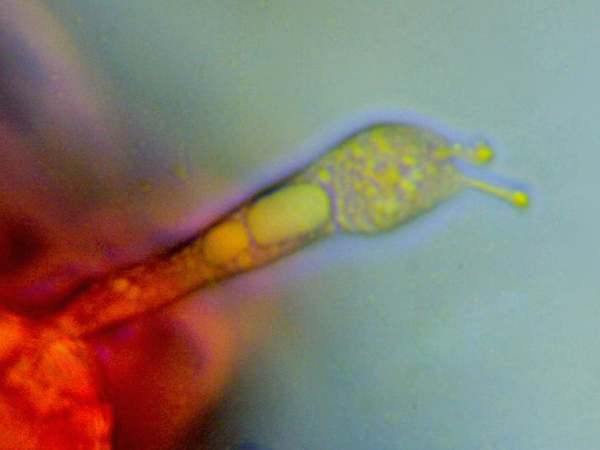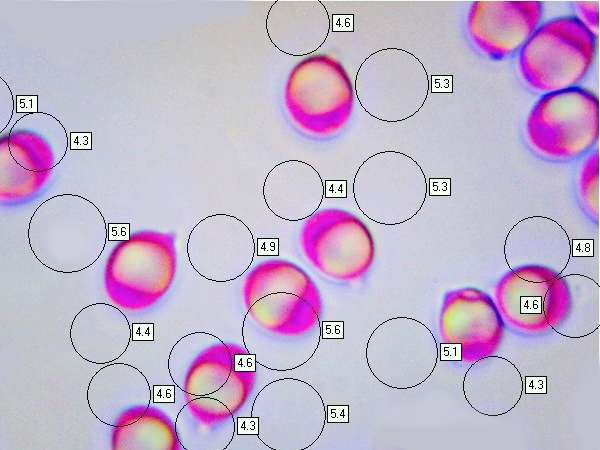Tricholoma stans (Fr.) Sacc. - Upright Knight
Phylum: Basidiomycota - Class: Agaricomycetes - Order: Agaricales - Family: Tricholomataceae
Distribution - Taxonomic History - Etymology - Identification - Culinary Notes - Reference Sources
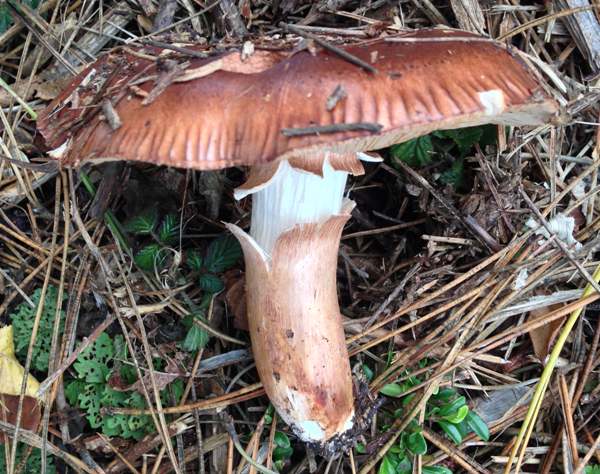
There is a small group of brown-capped mushrooms in the genus Tricholoma, and separating them to species level is very difficult. Tricholoma stans is so rare that great care and microscopic study is required if you are to key it out successfully.
Distribution
This mycorrhizal woodland mushroom is a very rare find in Britain, where Scotland is its main foothold (but hardly a stronghold). Tricholoma stans is also recorded in some parts of mainland Europe.
Taxonomic history
This mushroom was first described scientifically in 1874 by Elias Magnus Fries, who named it Agaricus stans (at a time when most gilled fungi were initially placed in a gigantic Agaricus genus, now largely redistributed across many other new genera); its currently-accepted binomial name Tricholoma stans did not come into existence until 1887, when Italian mycologist Pier Andrea Saccardo transferred this species to its present genus. Agaricus stans Fr. is therefore a synonym of Tricholoma stans.
Etymology
Tricholoma was established as a mushroom genus by the great Swedish mycologist Elias Magnus Fries. The generic name Tricholoma comes from Greek words meaning 'hairy fringe', and it must be one of the least appropriate mycological genus names, because very few species within this group have hairy or even shaggily scaly cap margins that would justify the descriptive term.
The specific epithet stans comes from Latin and means standing, or erect. (The common name Upright Knight reflects this meaning, too.)
Identification guide
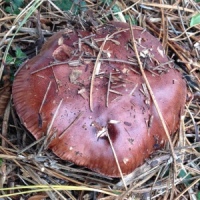 |
Cap5 to 10cm across, convex becoming almost planar; smooth; viscid; reddish brown to grey brown sometimes with a pale margin which is usually lacking radial fibres but may occasionally be very weakly striate. |
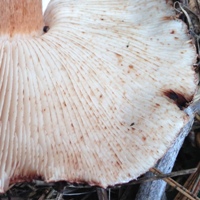 |
GillsWhite or cream, moderately crowded;emarginate (notched near the stem). StemInitially white, becoming pale brown; cylindrical or sub-bulbose; smooth or finely longitudinally fibrillose; 4 to 6cm long, 1 to 3cm diameter; no stem ring. FleshWhite, turning brownish when handled. |
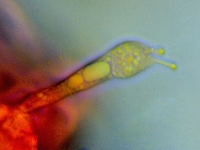 |
BasidiaSome of the basidia are bisporic, as seen here. |
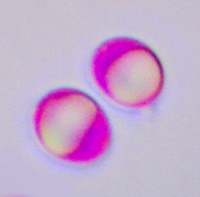 |
SporesEllipsoidal, smooth, 5.5-7 x 4-5.5µm; inamyloid. Spore printWhite. |
Odour/taste |
Indistinct or faintly farinaceous odour (like damp flour); farinaceous taste. |
Habitat & Ecological role |
Ectomycorrhizal mainly with pine trees in Scotland; also recorded with spruces in some mainland European countries. |
Season |
The main fruiting season in Britain is summer and autumn, but this observation is based upon very few confirmed records. |
Similar species |
Tricholoma pesundatum, a fairly common find in parts of Scotland but rare elsewhere in Britain, is a similar species; it differs in having a stronger farinaceous odour and taste; its spores are significantly narrower, and it usually has dark droplets within guttules (roundish depressed spots) near the cap margin. |
Culinary Notes
The Upright Knight is very rare, and so it is unclear whether it is edible, inedible or poisonous.
Reference Sources
Fascinated by Fungi, 2nd Edition, Pat O'Reilly 2016, reprinted by Coch-y-bonddu Books in 2022.
Kibby, G (2013) The Genus Tricholoma in Britain, published by Geoffrey Kibby
Uniting Tricholoma sulphureum and T. bufonium. Comandini O, Haug I, Rinaldi AC, Kuyper TW; Mycological Research. 2004 Oct; 108 (Pt 10): 1162-71.
Dictionary of the Fungi; Paul M. Kirk, Paul F. Cannon, David W. Minter and J. A. Stalpers; CABI, 2008
Taxonomic history and synonym information on these pages is drawn from many sources but in particular from the British Mycological Society's GB Checklist of Fungi.
Acknowledgements
This page includes pictures kindly contributed by Simon Harding.
Fascinated by Fungi. Back by popular demand, Pat O'Reilly's best-selling 450-page hardback book is available now. The latest second edition was republished with a sparkling new cover design in September 2022 by Coch-y-Bonddu Books. Full details and copies are available from the publisher's online bookshop...
